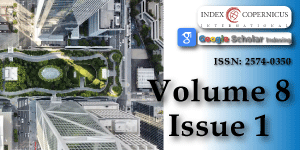The Effect of Cellulose Fiber on the Bending Strength of Autoclaved Aerated Concrete
Main Article Content
Abstract
Autoclaved aerated concrete is becoming an increasingly popular building material, and for good reason. It is ecological, energy efficient, strong, and durable. Studies show that the production of autoclaved aerated concrete saves 85% of energy compared to the production of heavy concrete. However, the use of steel reinforcement in large-sized aerated concrete products leads to deterioration of thermal insulation properties, corrosion, and destruction of the material. Replacing steel reinforcement with discrete fiber strands can solve this problem. The fiber does not affect the thermal insulation properties, is not prone to corrosion, and can be evenly distributed over the entire volume of the product.
Article Details
Copyright (c) 2024 Lapovska S, et al.

This work is licensed under a Creative Commons Attribution 4.0 International License.
Fouad F, Ramadan W, Schoch T, Kirby J. Environmental performance of autoclaved aerated concrete in the USA. ce papers. 2023; 6:5-14. https://doi.org/10.1002/cepa.2223;
Hofmann M. CEO MHE Group. Indonesia AAC worldwide. 2: 2024.
Bentur A, Mindess S. Fibre Reinforced Cementitious Composites. Modern Concrete Technology Series A series of books presenting the state-of-the-art in concrete technology Series.
Pehlivanl ZO, Uzun I, Yücel ZP, Demir I. The effect of different fiber reinforcement on the thermal and mechanical properties of autoclaved aerated concrete. Constr Build Mater. 2016; 112:325–330.
DSTU-N B V.2.7-308 Guidelines for the manufacture of aerated concrete products.

